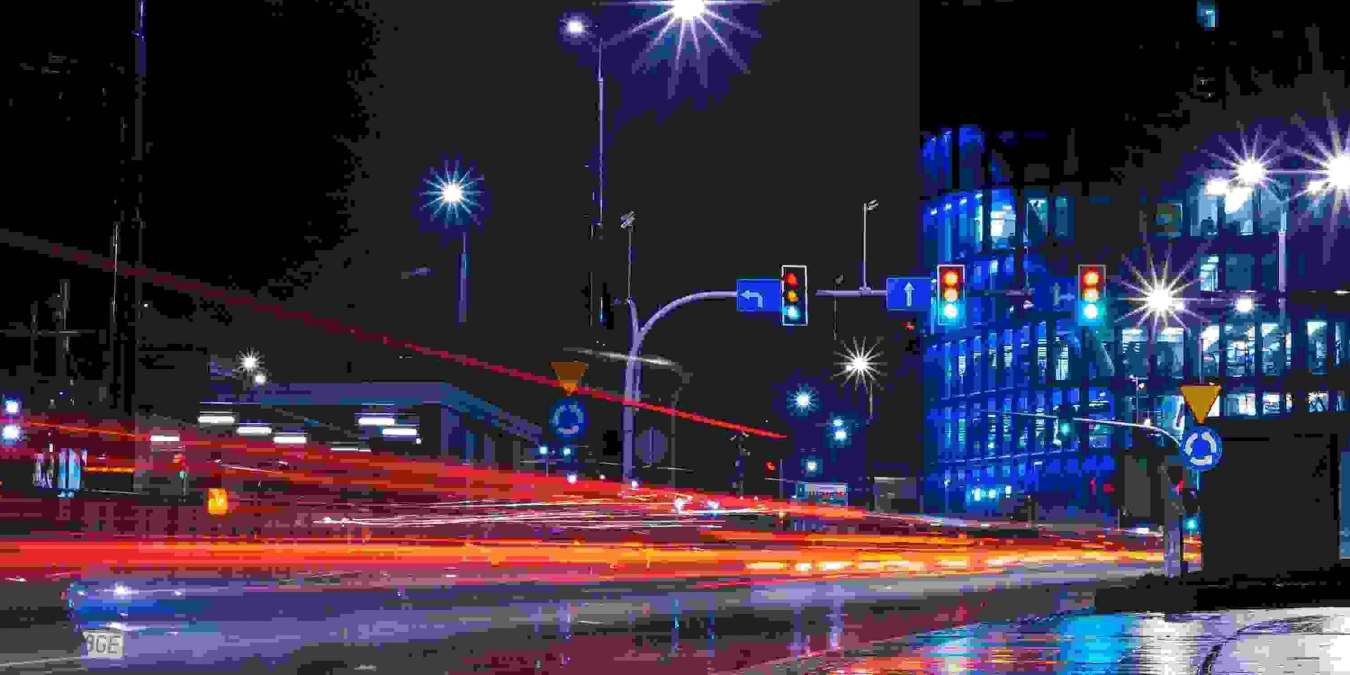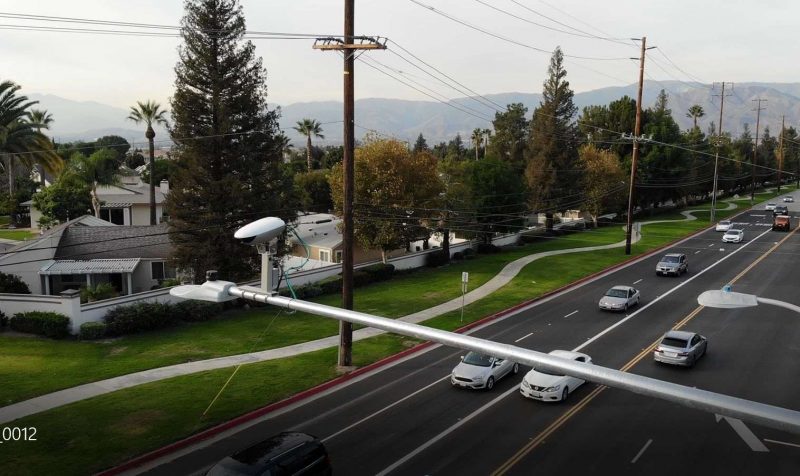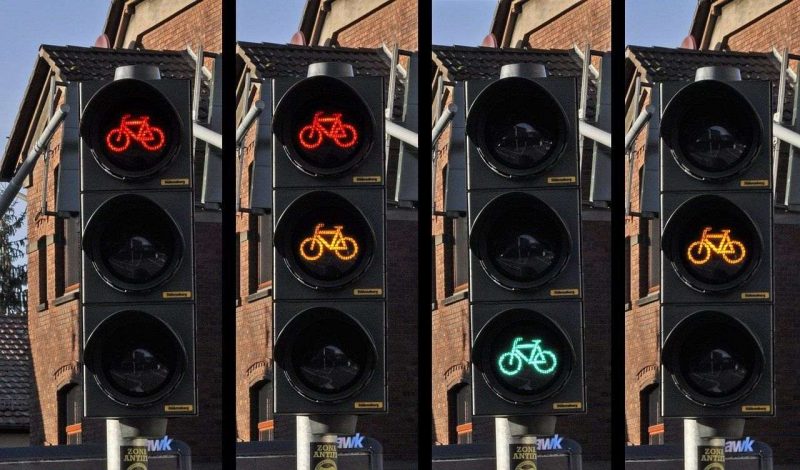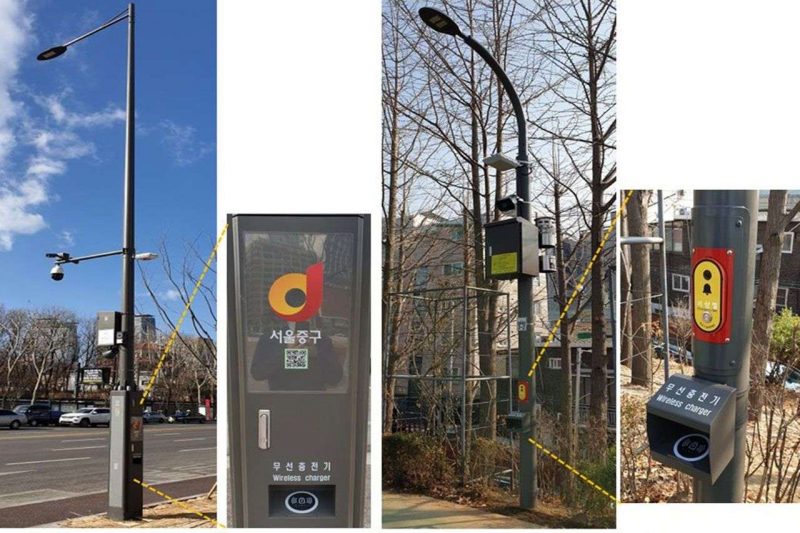
As road users, we often feel as if the traffic is conspiring against us. If you’ve ever waited at three lanes of traffic lights during peak hour and manage to get every red light or hate crossing a road where you never quite make it across both pedestrian crossings even if you run, then you’ll understand the frustration felt by many. Fortunately, the efforts of smart city planning provide a layer of technological innovation to ease traffic and congestion woes and reduce accidents. A critical component is smart traffic lights.
While traditional traffic lights are programmed to change signals at predetermined times, such as typical peak hours. By comparison, smart traffic systems acquire data from road users and communicate with a central control system to change lights and signal lengths as needed.
Smart traffic control systems primarily consist of :
- A central control system
- Smart traffic lights
- Cameras and queue detectors
The cameras and queue detectors can monitor and inform the control system of real-time traffic conditions. In turn, the lights can respond according to the information, improve traffic flow, reduce congestion, and prioritize pedestrians and emergency vehicles.
What are the benefits of smart traffic lights?

Cities can combine smart traffic lights with strategic route planning to reduce traffic jams, lower CO2 emissions, and redistribute traffic flow. Provider NoTraffic optimizes traffic light grids with AI embedded sensors that can detect different travel modes such as cars, bikes, buses, or pedestrians — and changes the lights according to the needs of each. The platform then enables each city to implement traffic policies that maximize traffic flows and make the streets safer. The company recently installed its infrastructure in Phoenix, Arizona. Soon, buses will receive priority based on capacity and time schedule while routing data from navigation apps, which will help divert traffic in real-time, based on origin-destination data of all road users.
Prioritize emergency vehicles, public transport, and pedestrians
The German city of Ludwigsburg, fitted with traffic lights with Road-Side Units. These correspond with an on-board unit installed in firetrucks and other emergency vehicles, granting them green-light passage en route to emergencies. The system works by sending messages relaying position and speed, several times per second, from emergency vehicles to a traffic light controller. There, the signals are processed and compared with the scenarios stored in the programming. If the system detects an approaching emergency vehicle, the programmed signal sequence starts, and the traffic light controller switches to the prioritization program. Once the firefighters have passed the intersection, the traffic light controller switches back to normal as quickly as possible to minimize the impact on road traffic and traffic disturbance.
Smart Bicycles lights: freedom to ride or part of a bigger problem?
In 2019, avid cyclist and IBM Researcher Josh Andres worked with the RMIT Exertion Games Lab to develop ‘Ari’, a Smart e-Bike that can extend the rider’s physical and cognitive abilities to catch traffic lights on the green.
Ari used AI and IoT to assist the rider to regulate the speed and cross-traffic lights on green. The researchers used traffic data and green wave modeling provided by Victoria’s road and traffic authority, VicRoads, to trial the e-bike in real traffic conditions on Melbourne’s streets. They calculated the optimum speed required to have the greatest chance of crossing all lights on the green at the test location (22km per hour). Ari was programmed to help the rider research and maintain this speed – by increasing engine support to accelerate, and cognitively by whispering “slow down a little” via bone-conducting headphones.

In the Netherlands, cities carried out proof of concept trials to prioritize green lights when bike riders approach. An example is the use of the mobile app Schwung, which is connected to smart traffic lights once activated. The app starts automatically upon cycling (the rider doesn’t need to do anything else), and traffic lights identify that you are approaching and turn green.
However, cybersecurity experts criticized the Dutch cycle lights for security vulnerabilities, with security researchers Rik van Duijn and Wesley Neelen from a security firm named Zolderat demonstrating their flaws at the 2020 DEFCON hacker conference. The hackers were able to trick the system into giving the green light to non-existent bicycles by feeding fake data into the apps.
The ease with which researchers could hack the app highlights the need for a security-first approach to design and testing and further implementation for all smart light initiatives. This is particularly important as we’re already seeing many initiatives targeting different road users coming from different companies, many with their own protocols and proprietary software – from patches to plug-ins and apps. How will we ensure all of these are appropriately secure (and remain so?)
Vehicle to Infrastructure capabilities are just the beginning
In 2019, Audi introduced vehicle-to-infrastructure (V2I) service “Traffic Light Information” to Ingolstadt, Germany. The technology has been available in much of the US since 2016) with a larger rollout in progress. Audi drivers can see what speed is required to reach the next traffic light on green via the dashboard. If that is not possible within the permitted speed limit, there will be a countdown to the next green phase.
Audi predicts that in the future, their customers may enjoy added benefits. These include cars which make increased use of braking energy to charge their batteries at red lights. They also predict that predictive adaptive cruise control could enable cars to even brake automatically at red lights.
Smart traffic light infrastructure that can charge drones

Traffic lights provide physical infrastructure – a vehicle for additional technology. The Seoul Metropolitan Government recently announced the installation of a total of 26 “Smart Poles (S-Poles)”. S-Poles aim to integrate road facilities, such as streetlights and traffic lights, throughout the city. Features include public wireless access points and smart closed-circuit cameras.
S-Poles act as road facilities and combine wireless APs, intelligent CCTVs, IoT, smart crosswalks, and other urban technology. Each Pole will feature area-specific technology in addition to its basic functions. For instance, S-Poles at Seoul Plaza, open-air public space in front of Seoul City Hall, feature the city’s public WiFi called “KkachiOn” access points. Those near Sungnyemun Gate, also known as Namdaemun, Korea’s National Treasure No. 1, carry QR codes to access information on cultural assets.
The city plans to expand S-Poles’ installation to new neighborhood this year. It plans to set up upgraded S-Poles that can recharge drones and electric vehicles. Drones will be able to recharge from the upper part of the S-Poles while sending back data to its control towers, which would help authorities monitor potential disasters and emergency rescue efforts. S-Poles can also crack down on parking violations.
Smart traffic lights and smart city equality
In Nairobi, the city has more than 400 junctions but just 42 traffic light-controlled junctions. Half of the lights using manually pre-fed data while the other half uses an automated intelligent system to allocate time for roads with heavier traffic. According to Nation Africa, several of junctions of lights don’t work. Police staff traffic patrol – a mess that keeps motorists in traffic for hours. Its a familiar smart city scenario. Smart city innovation is restricted geographically (sometimes installed as a testbed during a research phase). At the same time, the rest of the city languishes. Technology must be applied across cities, for the entire city to reap the benefits. This will remain a pain point that will persist until smart city applications can scale at any affordable price point.










